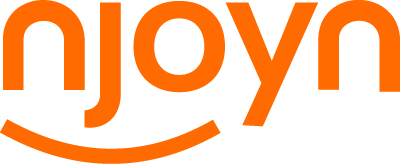
Lessons From the National Gallery
Navigating multiple open positions
The larger the organization, the more likely it is that it needs to fill multiple open positions at any given time. Tracking progress on numerous open positions can itself be a time-consuming task if the organization’s hiring management system isn’t sophisticated.
The hard way to track open positions
Unsophisticated applicant tracking processes aren’t uncommon. Many recruiters keep important information in multiple silos like email, inboxes, filing cabinets, and other places that they might not be tracking.
Their first stab at effective tracking may be the use of a list-maker, like a spreadsheet, to tie all this data together. Maintaining that list manually takes time that could be more productively spent.
The easy way to track open positions
Njoyn, a leading recruitment management system, eliminates both the list-maintenance task and the uncertainty that recruiters are missing information.
It shows recruiters the status of each posting on just one screen, a recruiter dashboard. Unreviewed candidates, stalled steps and other issues quickly come to light so the recruiter can proactively move postings forward.
This recruiter dashboard also enables collaboration. “If my colleague is away on vacation, I can go into Njoyn to review the job postings that my colleague is working on,” says Bernardo Gallo, a human resources advisor with the National Gallery of Canada. “Njoyn shows you all applicants for a given job on one screen instead of obliging you to change screens.”
Simple and foolproof applicant tracking
Many applicant tracking system users don’t need every feature the system offers. Hiding unnecessary features from such users helps to streamline the experience of using the Applicant Tracking System (ATS). It also keeps users from accidentally doing things they shouldn’t.
The second consideration comes to Bernardo Gallo’s mind. “Recruiters can only create job postings or pre-screening questions, but cannot delete them from the database,” says Gallo. “If they delete a pre-screening question, it’s gone from the database. The system keeps the answers, but the questions are no longer available.”
Issues don’t end there. “The next time you want to post a job, that question is no longer available.”
“You want to restrict permission to delete elements from the database to certain people only.”
Preventing problems and improving user experience
The National Gallery assigns either “recruiter” or “administrator” access to each person who uses its talent acquisition system, Njoyn. Administrators can tailor the set of system features each individual user sees. They do this to help Gallery users avoid unnecessary complications and sidestep foreseeable pitfalls.
Some organizations configure seven or eight different sets of access, but the Gallery’s needs are more modest. “The administrators have more permissions,” Gallo continues. Recruiters “can only create job postings or pre-screening questions, but cannot delete them from the database.”
Search
Most Popular Posts
150 Commerce Valley Drive West. Markham, ON. L3T 7Z3. Tel: +1 905 695 6560
